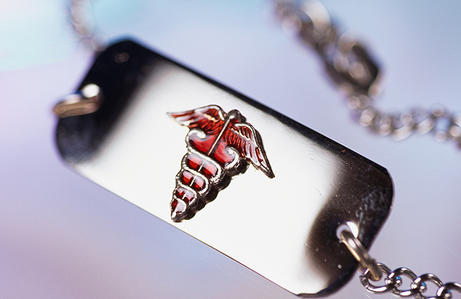Anaphylaxis Education Saves Lives
By Soha Budhani

Childhood is an amazing time in your life. Yet for kids like me who have to deal with food allergies, enjoying the present can be tricky. Time and again, I find myself staring at snacks or a food spread at a friend’s house or at a party, quickly realizing there is absolutely nothing safe to eat. Asking about ingredients will often get me an offhanded “There are no nuts in pizza!” or “Honey, it's a sandwich. Sandwiches don’t have nuts.” My name is Soha Budhani, and I’m a twelve-year-old navigating the world with asthma, and peanut and tree-nut allergies. While I'm not alone, I am in a slim minority.
Most people do not know what food allergies truly are. Harvard University defines a food allergy as an “immune system reaction to something that is normally harmless.” In layman’s terms, your body decided to wage war to protect itself, and it completely backfired. Food allergies are a difficulty many students are dealing with, but without enough visibility. Safety is a huge concern, and people dismiss the severity of reactions.

Personally, I’m anaphylactic to peanuts and tree nuts. Anaphylaxis is a severe, potentially life-threatening allergic reaction. From my experience, having anaphylaxis means instinctively reacting, the second you suspect something is wrong. In cases of anaphylaxis, time is of the essence as fatalities are associated with a delay in administering epinephrine. This means administering epinephrine immediately and then calling 911. While you wait for emergency responders, other medications like antihistamines and inhalers can help manage symptoms, but epinephrine must be the first line of treatment.
Calling 911 is critical. You have to specifically tell 911 that the person is having an anaphylactic reaction, because they may need to be administered additional doses of epinephrine or need other tools to open the airway. This may all sound frightening -- and it is. My classmates are always surprised to hear how severe and how traumatic it can be.
While I don’t enjoy reliving the experience, I know how important it is to teach others about food allergies. Preparation is key for treating anaphylaxis.
I have experienced anaphylaxis several times, and have realized that there is one thing that can really compound the problem: belittling anaphylaxis. If you pretend that your symptoms are not as critical or life-threatening as they seem, and procrastinate in taking your epinephrine, there is a chance that it may not work to its full potential. This is why even in that state of fear, it’s important to use your epinephrine quickly. Impending doom is actually one of the potential symptoms of anaphylaxis (“Anaphylaxis”). Your body’s very first reaction, within milliseconds, may be to feel scared and nervous, signaling to the brain that something is very wrong. Administering your epinephrine is essential when dealing with anaphylaxis. The first two times I experienced anaphylaxis, nervousness overtook me, and my first response was not to take my Epi-Pen® immediately, as it should have been. Honestly, I was scared that it would hurt. How silly of me. In fact, I didn’t even feel it. Within seconds of being administered, a feeling of relief washed over me because I could breath, not perfectly, but certainly better.
Anaphylaxis is also very confusing, because your own body is sending signals that can be hard to decipher and react to. Hives, facial swelling, throat swelling, itching, fainting, vomiting, confusion, trouble breathing are just some of the symptoms of anaphylaxis. For those like me with additional conditions such as asthma, anaphylaxis can spark an even more severe reaction. It is important that more people take food allergies seriously. Just a little information and education can save many lives.

Recognizing & Responding to Anaphylaxis
Anaphylaxis can happen at any time. Make sure you're prepared to save a life by taking this free course.


